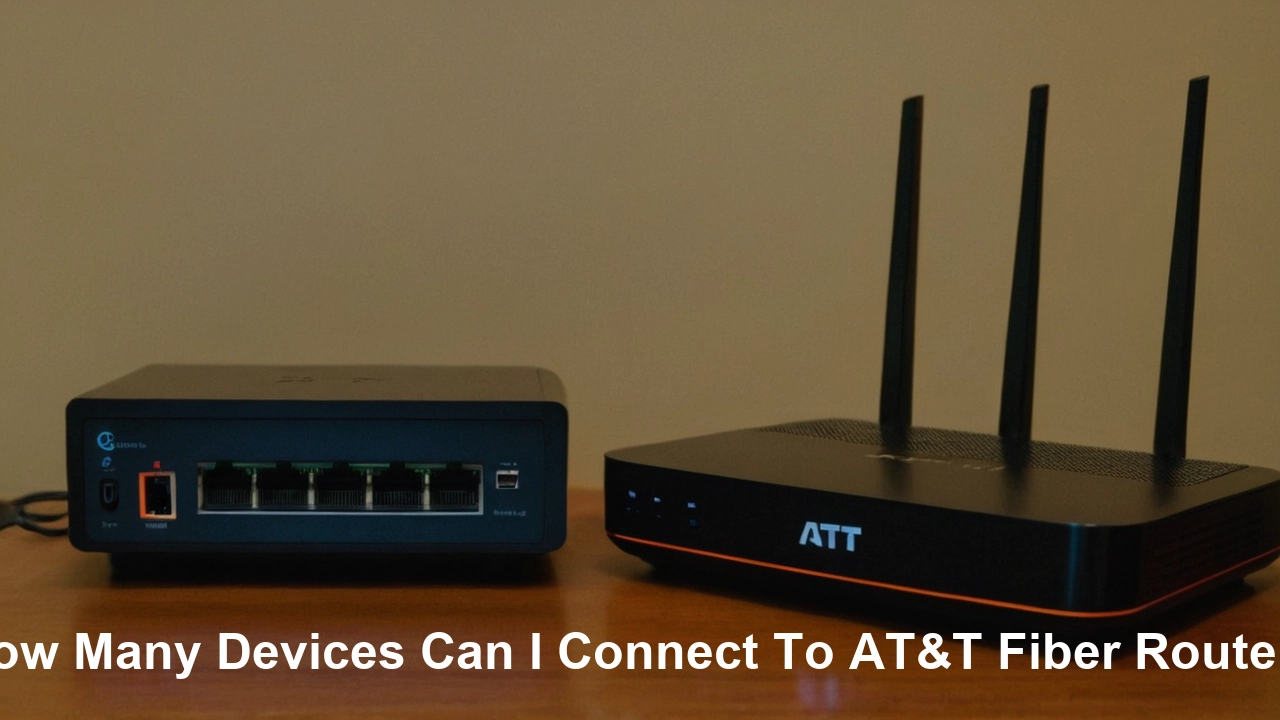How many devices can I connect to AT&T fiber router?

It is, however, important to know that the number of devices that can be connected to an AT&T fiber router depends on some factors. These include:
1. Router model capabilities
Several products within the AT&T router line can support various numbers of devices at a time, depending on the router’s model. Some of the router brands and models can accommodate more connected devices than others, especially the latest and most expensive ones. For instance, the current WiFi 6 or WiFi 6E routers from AT&T Fiber Internet are capable of supporting over a hundred devices simultaneously. Some of the older versions or lower-end models could be limited to supporting 50-60 devices at a time. Check the specifications of your router to determine the number of connections that can occur at the same time.
2. Internet speed package
The AT&T fiber internet package speed determines the number of devices one can connect to the internet at a given time. This is because higher internet speeds offer a total capacity and data transfer rate to accommodate several devices that are accessing the internet at the same time. For example, AT&T Fiber service provides Internet packages such as 1 Gig (1Gbps speeds) that support multiple devices or 5 Gig (up to 5Gbps) for most devices, since it has the fastest multi-device internet speed.
3. Types of devices connected
Other features include the number of connected devices, the type of devices you can connect, and the number of connections at one time. For instance, smart home sensors, light bulbs, and electronic door locks are these kinds of devices that may consume a very small amount of data as compared to others. Laptops, tablets, game consoles, and especially streaming media devices are higher bandwidth devices and use more bandwidth than the norm when being actively utilized. From the IoT smart home type, if you primarily have devices with lower bandwidth, then the total count could be 100+ in number. However, if, for instance, you had four users streaming 4K videos and high bandwidth gaming at once, then that number would be considerably lower for the same performance.
4. Wired vs wireless connections
The use of wired connections, where devices are connected through cables directly, such as via an Ethernet cable, as opposed to WiFi, allows for more simultaneous connections as wired connections are less prone to disturbances and offer higher performance. Wired devices are not a factor in terms of WiFi bandwidth usage because they do not compete with the available wireless device capacity as much. For this reason, the router specifications may very well state that the wireless connection and wired connection have separate capacity estimates. Therefore, if possible, try to dedicate wireless capacity to laptops and mobile devices and prioritize wireline connections for streaming media players, smart TVs, desktop PCs, and gaming consoles.
5. Router placement
The location in which the AT&T Internet fiber router is installed determines its overall device support at optimal capacity. The WiFi signal will be able to reach a variety of rooms and floors if the router is placed in the center of the house rather than in the corner or at the end. Eliminating any such obstacles also assists, for instance, when the router is located on a high wall or a bookshelf rather than on the floor behind the furniture. Correct positioning ensures that the gadgets can associate at a further distance and remain connected even if one changes location within the home.
6. WiFi bands
In all AT&T fiber routers, there is dual-band WiFi, which means that they create two separate networks, 5GHz and 2.4GHz, respectively. This means that the two bands are just like two different WiFi networks – so, devices connect to whichever of the two gives each a better performance rather than being on the same network. Assigning devices in sequence between the two bands results in more simultaneous connections in total. Some IoT devices can only operate on 2.4 GHz, while most modern mobile phones, tablets, and laptops prefer 5 GHz for faster transmission.
7. WiFi channel optimization
Another way in which you can also manage to enhance your AT&T fiber router and the devices that can connect to the router is by adjusting the channels used by the WiFi. What this implies is that the router will make a selection of the least-used channel in that environment at that instance in time. Or you can choose individual channels to avoid the list to minimize signal disruption by the neighboring networks in case. Lessening channel interference results in greater signal stability when linking devices across the home area.
Therefore, the number of devices that can connect to the AT&T fiber with reliability is determined by the router model, internet speed plan, the devices, use of wired connections where possible, the WiFi bands/number of channels, and the location of the router. Overall, it can be generalized that you are likely to establish a connection with one hundred devices or more in total under the best possible circumstances. Higher-end routers for the AT&T WiFi 6/6E for faster 1 Gig or 5 gig fiber connection with central placement of the router, ethernet backhaul of streaming devices, and dual-band for the most device capacity at once. For specific technical information on how to set the router for maximum allowed connections at the same time, refer to the router manual.
Upgrade to faster, more reliable AT&T Fiber Internet today! Call us at +1 844-905-5002 and get connected with speeds that keep you ahead.





